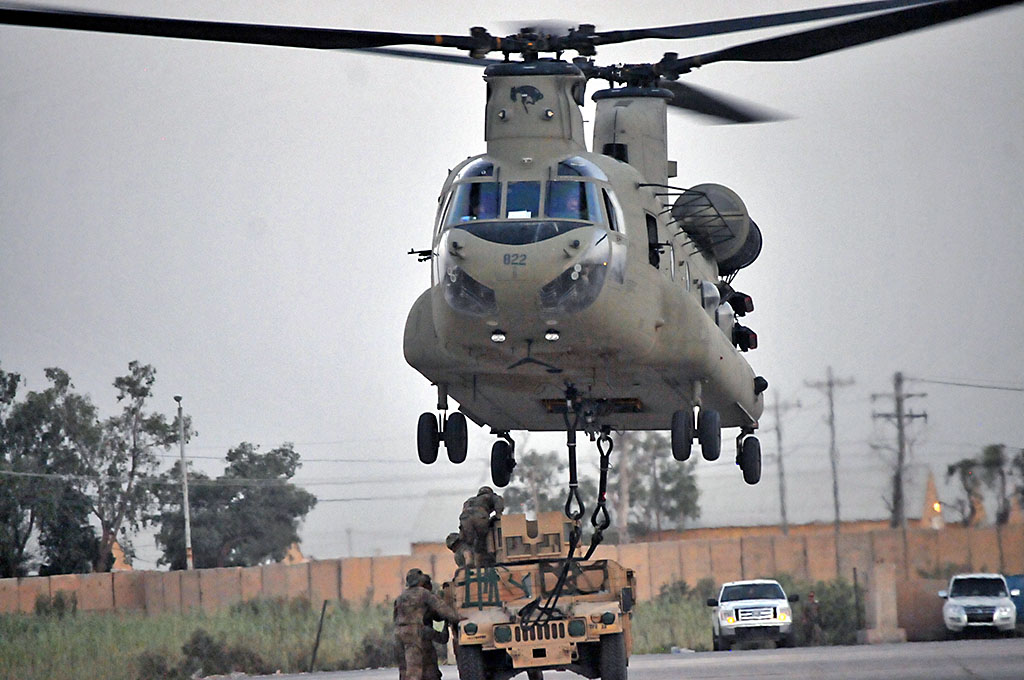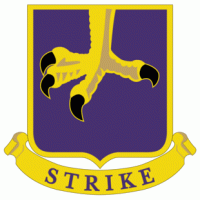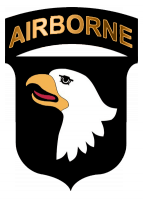Written by 1st Lt. Daniel Johnson
2nd Brigade Combat Team, 101st Airborne Division (AA) Public Affairs
Taji, Iraq – Soldiers from Task Force Strike, 2nd Brigade Combat Team, 101st Airborne Division (Air Assault) and pilots from Company B, 1st Battalion, 168th Aviation Brigade refined their sling load skills at Camp Taji, Iraq, July 15th.
As the U.S. Army’s only Air Assault division, the 101st is trained and equipped to conduct operations to rapidly move around the battlefield.
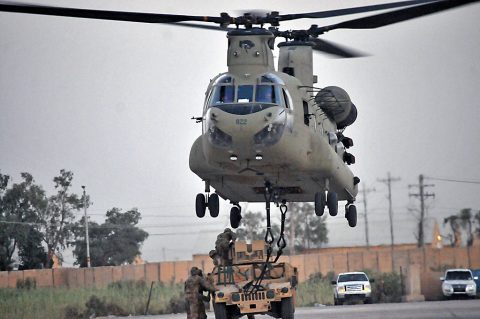
“We have to be more than trained,” said Gozy. “We have to be proficient at sling load operations to be ready to support the fight at a moment’s notice. Exercising all aspects of our supply capabilities gives us flexibility and allows us the opportunity to maximize assets available.”
In order to validate aircraft crews for sling load operations, all personnel must learn and execute proper load preparation, inspection, and slinging techniques. Training is conducted during both the day and night so that pilots will be able to move loads in either condition.
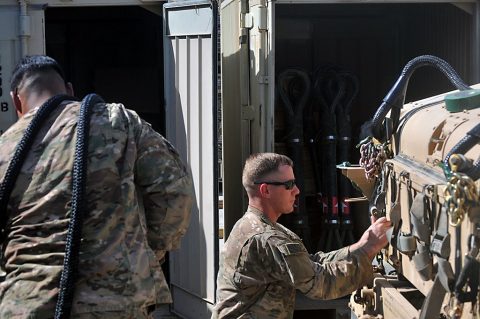
“Although this training is acting as a refresher course for Task Force Strike Soldiers, the main effort is to ensure the pilots are proficient in sling loads,” said 1st Lt. Kelsey Brooker 526th Assistant S3. “In the event equipment needs to be moved, it is essential the pilots are confident in their ability.”
Training started with qualified personnel rigging the loads that were going to be used. The loads were rigged, weighed, and then inspected by the aircraft crews. Next, all hook team personnel conducted rehearsals to safely hook the load onto the helicopters and egress properly. Ground guides were given refresher classes in hand and arm signals as well as actions to take in case of an emergency.
Two loads were tested during day and night exercises: an M1151 Humvee and an 8,900-pound training load. The aviation assets were guided by the ground crews and were tested multiple times.
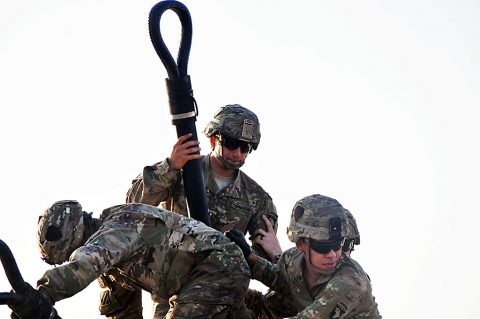
“Soldiers conducted sling load operations during day time first to gain confidence in the procedures.” said Gozy. “Afterwards, conducting the operations with night vision goggles allowed the Soldiers to show that they can conduct sling load operations anytime, anywhere. Conducting training at night gives the Soldiers more confidence in their training, as well as the pilots.”
This training will be ongoing so that 101st Soldiers and Army aviators can maintain their Air Assault proficiency.

